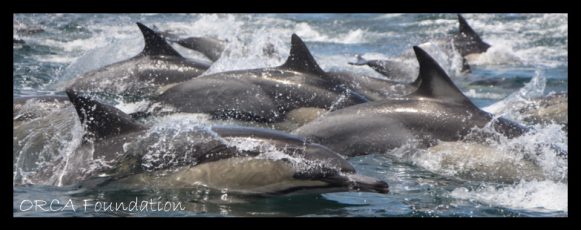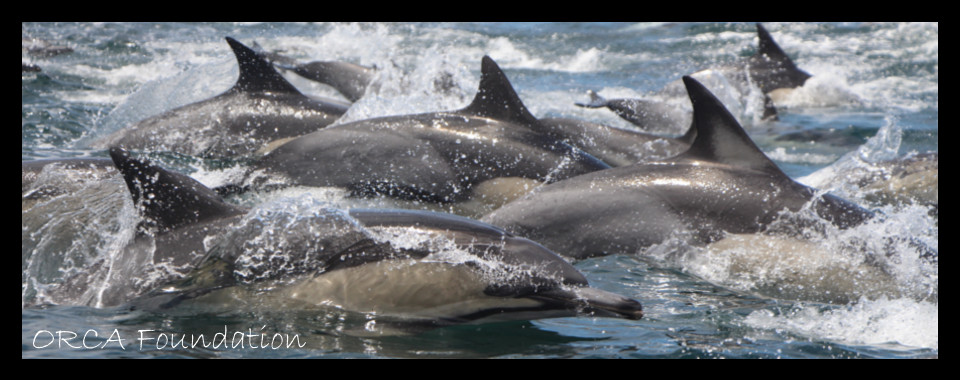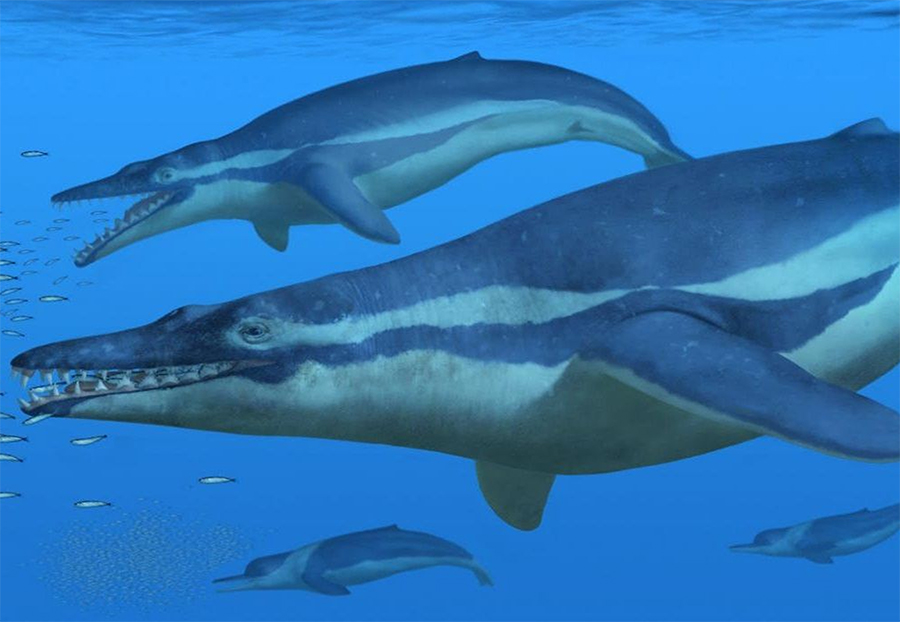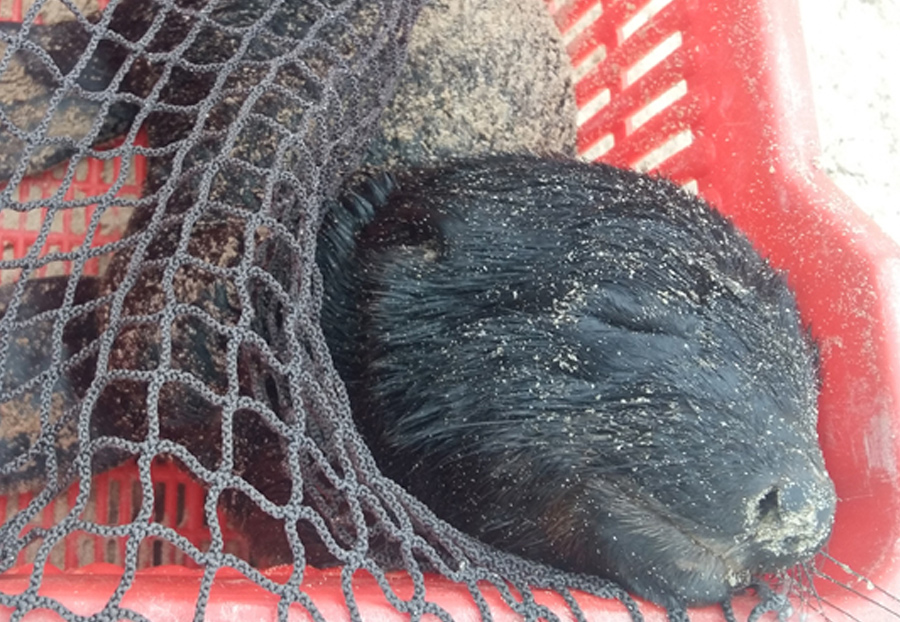Long-beaked common dolphin

In Plettenberg Bay we are fortunate enough to have three species of dolphins that frequent the area, and one of these is the long-beaked common dolphin Delphinus capensis. As the name may suggest, this species has a long, narrow, pointed beak, while another diagnostic feature is a ‘criss-cross’ figure-of-eight or hourglass shape on the sides which is buff coloured in the front, and a light grey in the back. The back of the common dolphin is a dark grey, while the belly is white. This is the smallest of the three species we find regularly in Plettenberg Bay, with females measuring a maximum of 252 cm and 148 kg, and males 265 cm and 190 kg. Long-beaked common dolphins are one of the most common warm-temperate and tropical dolphin species, and also form some of the largest pods of 1000-5000 individuals. This species has a disjointed but wide range in coastal areas of western and eastern South America, California and Mexico, western Africa, South Africa, Madagascar, southern Asia, and north island of New Zealand. Despite this, due to the unknown impact of incidental and purposeful takes of the long-beaked common dolphin in various areas the species is listed as Data Deficient according to the IUCN. Long-beaked common dolphins primarily feed on small, easily caught, pelagic shoaling fish (such as pilchards and anchovies) but their diet generally reflects local prey abundance and availability. This species is mostly found in waters less than 180 m deep, but not as near-shore as the other two dolphin species we find in Plettenberg Bay.
Written by: Minke Witteveen
For further reading:
- Hammond, P.S., Bearzi, G., Bjørge, A., Forney, K., Karczmarski, L., Kasuya, T., Perrin, W.F., Scott, M.D., Wang, J.Y., Wells, R.S. & Wilson, B. 2008. Delphinus capensis. The IUCN Red List of Threatened Species 2008. Accessed: 2016-11-05. URL: http://www.iucnredlist.org/details/6337/0.
- Plön, S., Albrecht, K.H., Cliff, G. and Froneman, P.W. 2012. Organ weights of three dolphin species (Sousa chinensis, Tursiops aduncus and Delphinus capensis) from South Africa: implications for ecological adaptation? Journal of Cetacean Research and Management 12: 265-276.




